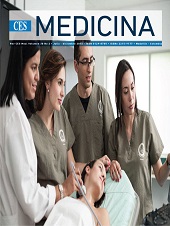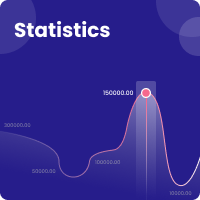NGAL as a marker to detect donor risk factors for delayed graft function
Abstract
Introduction: For deceased donor renal transplantation, it is important to have early markers that can predict the functional outcome of the transplant. Currently, creatinine is the marker of choice for determining whether a potential donor’s kidneys are suitable for transplantation. Urine neutrophil gelatinase-associated lipocalin (uNGAL) is a biomarker that has been utilized to diagnose early-stage acute kidney injury, but its behavior in deceased donors is uncertain. The objective of this study was to determine whether donor uNGAL levels can predict delayed graft function in recipients. Methodology: A prospective cohort utilizing descriptive statistics and non-parametric median tests was carried out to evaluate donor uNGAL levels at the time of kidney removal. The behavior of this biomarker was analyzed in kidney transplant donors to evaluate its use as a predictive factor for DGF. Results: A total of 27 standard criteria transplants were evaluated, including 7 (25.9%) women and 20 (74.1%) men with a median age of 27 years (18.75-43.25). The principal cause of death was traumatic head injury, followed by stroke. The median creatinine level was 0.8 mg/dl (0.57-1), and the median uNGAL level was 11.1 ng/ml (4.2-33.6). In total, 46 transplants were performed, of which 15.22% (7 patients) presented with delayed graft function and 2 patients needed renal replacement therapy within the first week after transplantation. The patients were grouped according to the presence of DGF, with median uNGAL values of 11.1 ng/ml (3-17.3) in patients without DGF and median values of 11.2 ng/ml (7.7-39.4) (p=0.4) in those with delayed graft function. No factors were found to be associated with the development of delayed graft function in the multivariate analysis. Discussion: in this study, uNGAL measurements in deceased standard criteria donors did not predict delayed graft function.
Downloads
References
Ferster, C. B. (1967). Arbitrary and natural reinforcement. The Psychological Record, 17, 341-347.
Maslow, A. H. (1954). Motivation and personality. NewYork: Harper.
Michael, J. (1982). Distinguishing between discriminative and motivational functions of stimuli. Journal of the Experimental Analysis of Behavior, 37, 149-155. doi: 10.1901/jeab.1982.37-149
Michael, J. (1988). Establishing operations and the mand. The Analysis of Verbal Behavior, 6, 3-9.
Downloads
Published
How to Cite
Issue
Section
License
Derechos de reproducción (copyright)
Cada manuscrito se acompañará de una declaración en la que se especifique que los materiales son inéditos, que no han sido publicados anteriormente en formato impreso o electrónico y que no se presentarán a ningún otro medio antes de conocer la decisión de la revista. En todo caso, cualquier publicación anterior, sea en forma impresa o electrónica, deberá darse a conocer a la redacción por escrito.
Plagios, duplicaciones totales o parciales, traduccones del original a otro idioma son de responsabilidad exclusiva de los autores el envío.
Los autores adjuntarán una declaración firmada indicando que, si el manuscrito se acepta para su publicación, los derechos de reproducción son propiedad exclusiva de la Revista CES Medicina.
Se solicita a los autores que proporcionen la información completa acerca de cualquier beca o subvención recibida de una entidad comercial u otro grupo con intereses privados, u otro organismo, para costear parcial o totalmente el trabajo en que se basa el artículo.
Los autores tienen la responsabilidad de obtener los permisos necesarios para reproducir cualquier material protegido por derechos de reproducción. El manuscrito se acompañará de la carta original que otorgue ese permiso y en ella debe especificarse con exactitud el número del cuadro o figura o el texto exacto que se citará y cómo se usará, así como la referencia bibliográfica completa.
| Article metrics | |
|---|---|
| Abstract views | |
| Galley vies | |
| PDF Views | |
| HTML views | |
| Other views | |



